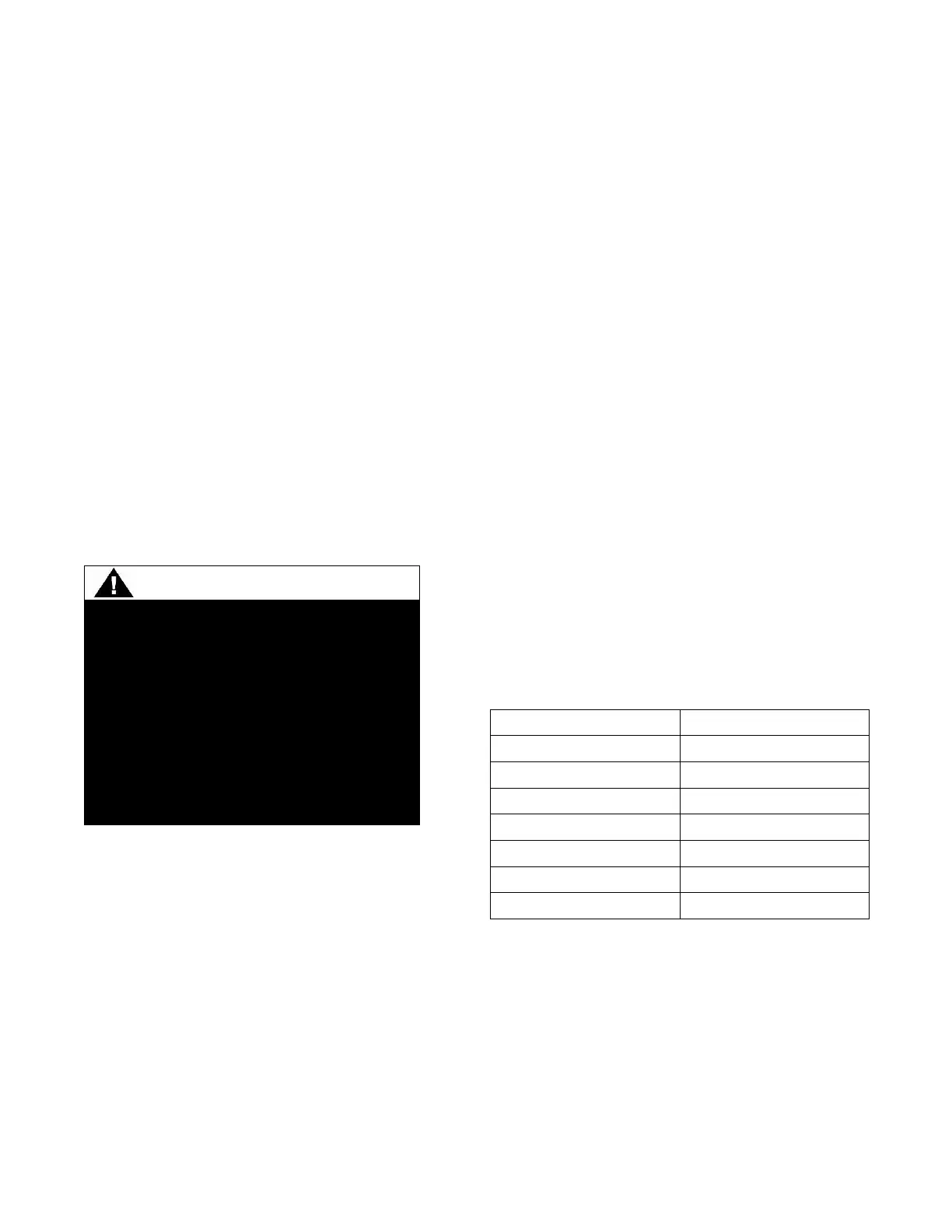Jetson
www.JetsonHVAC.com
54
Construct and install piping in accordance with all
local, state and national codes.
Supply and insulate the chilled water piping as
required, to prevent sweating and minimize heat
gain under normal operating conditions. Chilled
water piping must rise above the chiller to ensure
the evaporator is full of water and void of air at all
times. Install thermometers in the lines to monitor
evaporator entering and leaving water
temperatures.
FWCD chillers have manual balancing ball-valves
in the entering water lines. They may be used to
establish a balanced water flow. Both the entering
and leaving water lines have valves that can be
used to shutoff/isolate the evaporator and
condenser for service.
Equipment Damage!
To prevent equipment damage, you MUST
follow instructions below:
• Bypass unit when using a flushing
agent.
• Chilled water piping must rise
above the chiller to ensure the
evaporator is full of water and void
of air at all times.
• Do not over tighten connections.
Water Flow Rates
Establish balanced water flow through both the
evaporator and condenser. Flow rates should fall
between the minimum and maximum values given
in General Data Table. Flow rates above or below
these values can cause equipment damage or
improper unit operation. The evaporator and
condenser water pressure drop can be read
manually using the factory-installed condenser
inlet and outlet pressure gauge service ports.
Readings should approximate those shown by the
pressure drop charts for the individual chillers
Note: Pressure drop is an approximation and is to
be used as a tool to estimate flow rate and as an
aid to waterside system piping design. If an
accurate measurement of flow rate is required, an
accurate flow meter must be installed in the
system.
Chilled Water System Volume
Minimum system volume requirements are
indicated in the following table. Special
applications may deviate from these numbers as
directed by Jetson engineering. Operation below
these volumes will cause unacceptable system
control problems and the potential for evaporator
failure.
Table 13 Recommended Minimum required system volume
